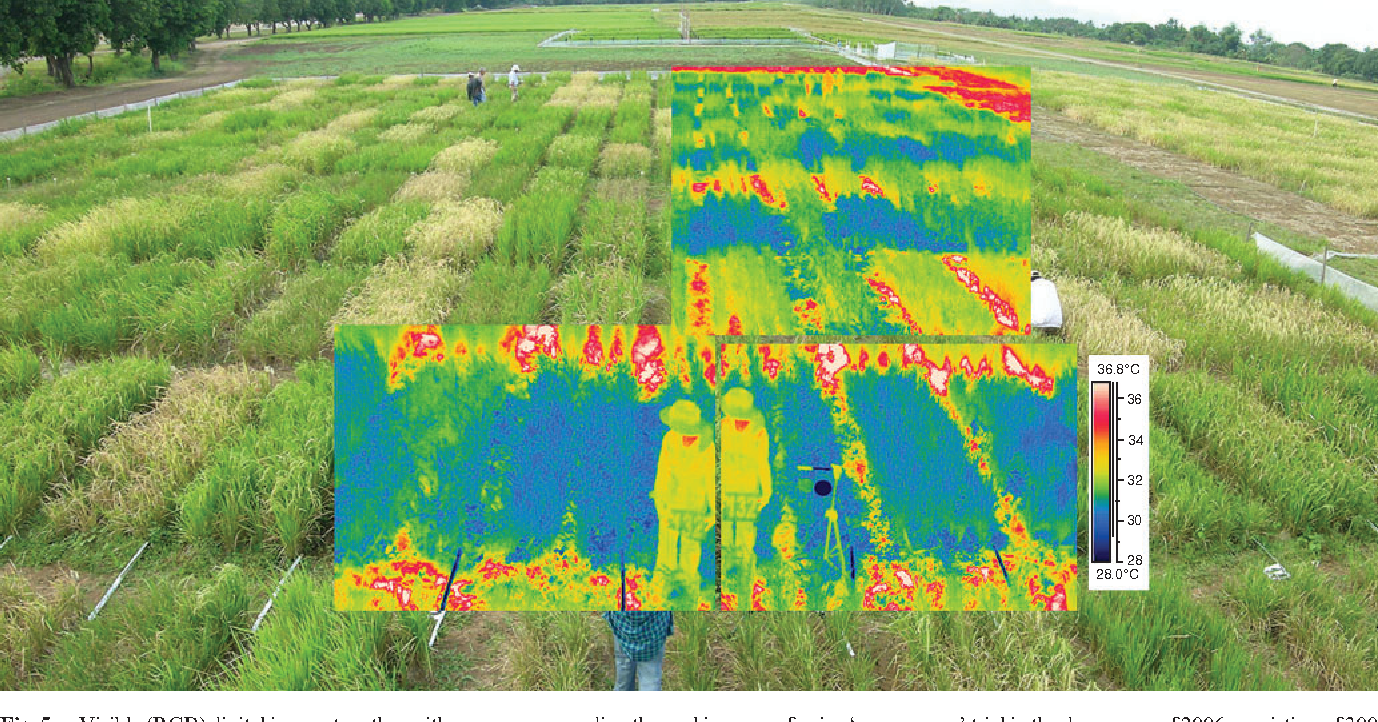Thermal imaging is a technology that uses infrared radiation to create images of objects. Thermal imaging cameras detect the infrared radiation emitted by an object and convert it into an electrical signal. This signal is then processed to create an image of the object.
Thermal imaging can be used to measure the temperature of an object, but it can also be used to detect the presence of objects that are not visible to the naked eye. For example, thermal imaging can be used to detect the presence of animals or people in darkness or fog.
Thermal imaging has a number of applications in agriculture. It can be used to monitor crop growth, detect pests and diseases, and assess soil moisture content. Thermal imaging can also be used to locate water leaks and assess irrigation systems.
Thermal imaging can be used in a variety of ways to improve agricultural productivity. For example, it can be used to:
– Monitor crop growth: Thermal imaging can be used to monitor the health of crops. By monitoring the temperature of plants, farmers can identify problems such as drought stress, nutrient deficiencies, and pest infestations at an early stage. This allows them to take corrective action before yield loss occurs.
– Detect pests and diseases: Thermal imaging can be used to detect the presence of pests and diseases. By monitoring the temperature of plants, farmers can identify infestations and take steps to control them.
– Assess soil moisture content: Thermal imaging can be used to assess the moisture content of soils. This information can be used to optimize irrigation schedules and reduce water wastage.
– Locate water leaks: Thermal imaging can be used to locate leaks in irrigation systems. This allows farmers to repair the leaks and improve the efficiency of their irrigation systems.
– Assess irrigation systems: Thermal imaging can be used to assess the performance of irrigation systems. This information can be used to improve the efficiency of irrigation systems and reduce water wastage.
Thermal imaging is a valuable tool that can be used to improve agricultural productivity. It can be used to monitor crop growth, detect pests and diseases, assess soil moisture content, locate water leaks, and assess irrigation systems.
How can thermal imaging help farmers detect problems with their crops or livestock early on and prevent losses down the road?
Thermal imaging can help farmers detect problems with their crops or livestock early on and prevent losses down the road. By monitoring the temperature of plants, animals, and soil, farmers can identify problems such as drought stress, nutrient deficiencies, pest infestations, and water leaks at an early stage. This allows them to take corrective action before yield loss or damage occurs. Thermal imaging is a valuable tool that can help farmers improve the productivity of their farms.
What are some of the benefits of using thermal imaging in agriculture compared to traditional methods of crop monitoring or animal husbandry?
Some of the benefits of using thermal imaging in agriculture compared to traditional methods of crop monitoring or animal husbandry include:
– Thermal imaging can be used to monitor the health of crops and detect problems at an early stage. This allows farmers to take corrective action before yield loss occurs.
– Thermal imaging can be used to detect the presence of pests and diseases. By monitoring the temperature of plants, farmers can identify infestations and take steps to control them.
– Thermal imaging can be used to assess the moisture content of soils. This information can be used to optimize irrigation schedules and reduce water wastage.
– Thermal imaging can be used to locate leaks in irrigation systems. This allows farmers to repair the leaks and improve the efficiency of their irrigation systems.
– Thermal imaging can be used to assess the performance of irrigation systems. This information can be used to improve the efficiency of irrigation systems and reduce water wastage.
Thermal imaging is a valuable tool that can help farmers improve the productivity of their farms.
Are there any drawbacks to using thermal imaging in agriculture that farmers should be aware of before making the switch?
There are some drawbacks to using thermal imaging in agriculture that farmers should be aware of before making the switch. First, thermal imaging cameras can be expensive. Second, they require trained personnel to operate them properly. Third, they only work well in clear conditions with little or no cloud cover. Fourth, they can be affected by dust and other particulates in the air. Finally, they have a limited range and cannot see through walls or other obstacles.
Despite these drawbacks, thermal imaging is a valuable tool that can help farmers improve the productivity of their farms.
How much does thermal imaging technology cost, and is it affordable for small-scale farmers as well as large-scale agribusinesses?
Thermal imaging technology can be expensive, with some thermal cameras costing several thousand dollars. However, there are also less expensive options available that can be used for agricultural applications. For example, FLIR One is a consumer-grade thermal imaging camera that connects to a smartphone and retails for around $200.
Whether or not thermal imaging technology is affordable for farmers depends on the size and scale of their operation. For small-scale farmers, the cost of a thermal camera may be a significant investment. For large-scale agribusinesses, the cost of thermal imaging technology is likely to be a relatively small expense compared to the overall costs of running the business.
Who manufactures thermal imaging cameras for agricultural use, and where can they be purchased online or in stores around the world?
Some of the leading manufacturers of thermal imaging cameras for agricultural use include FLIR Systems, Inc., DALSA Corporation, and Agrotec SpA. These companies offer a variety of thermal cameras that are designed for different applications.
Thermal imaging cameras can be purchased online from the websites of the manufacturers or from retailers that sell agricultural equipment. In addition, many farmers’ markets and agricultural trade shows sell thermal imaging cameras.
